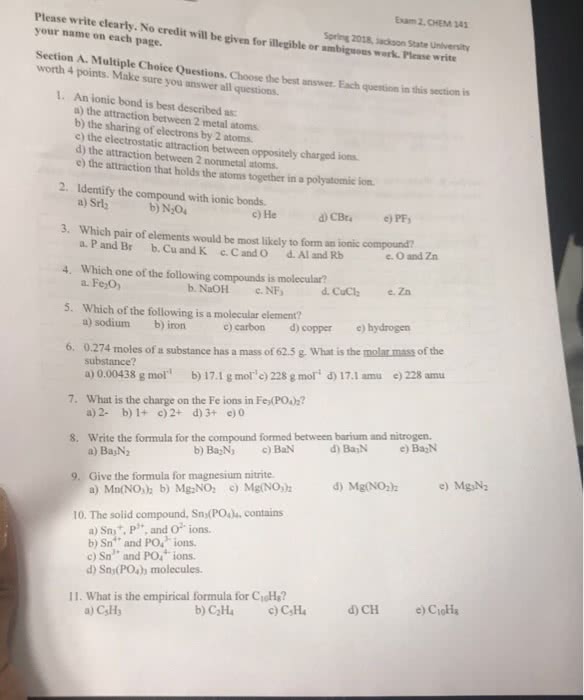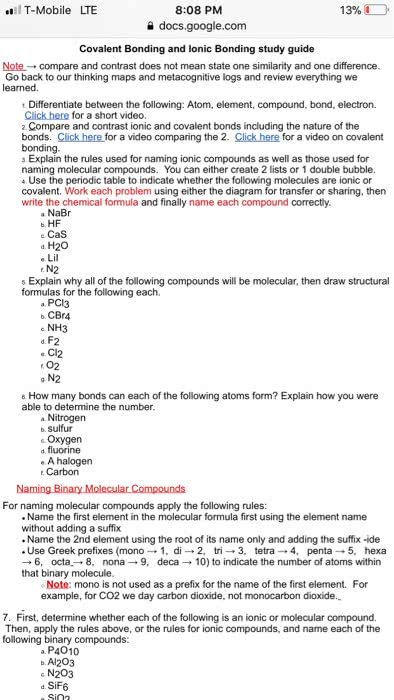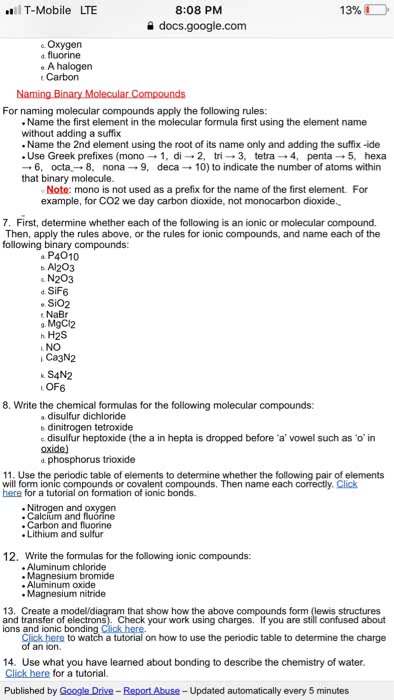CHM 111 Lecture Notes - Lecture 17: Chemical Formula, Ionic Compound, Molar Mass


26
CHM 111 Full Course Notes
Verified Note
26 documents
Document Summary
Subscripts specify the exact number of atoms of each element in one molecule of a covalent. Molecular formulae substance: ex: carbon dioxide (co2): 1 atom of carbon (cid:403) Ionic compounds, however, are written in formula units. As a result, the exact number of atoms of each element in the compound is not important. The formula unit is the smallest, electrically neutral collection of ions in an ionic compound. Thus, an ionic compound formula shows the simplest whole number ratio of atoms in the compound: ex: sodium chloride (nacl) is composed of one na+ for every cl-. Aluminum sulfide (al2s3) has 2 al+ for every three s- (cid:403) (cid:403) empirical formulae. Subscripts indicate relative number of atoms of each element in the molecule: ex: empirical formula for glucose: ch2o. Recall that molecules have formulas that specify the exact number of atoms of each element in one molecule of the substance.




